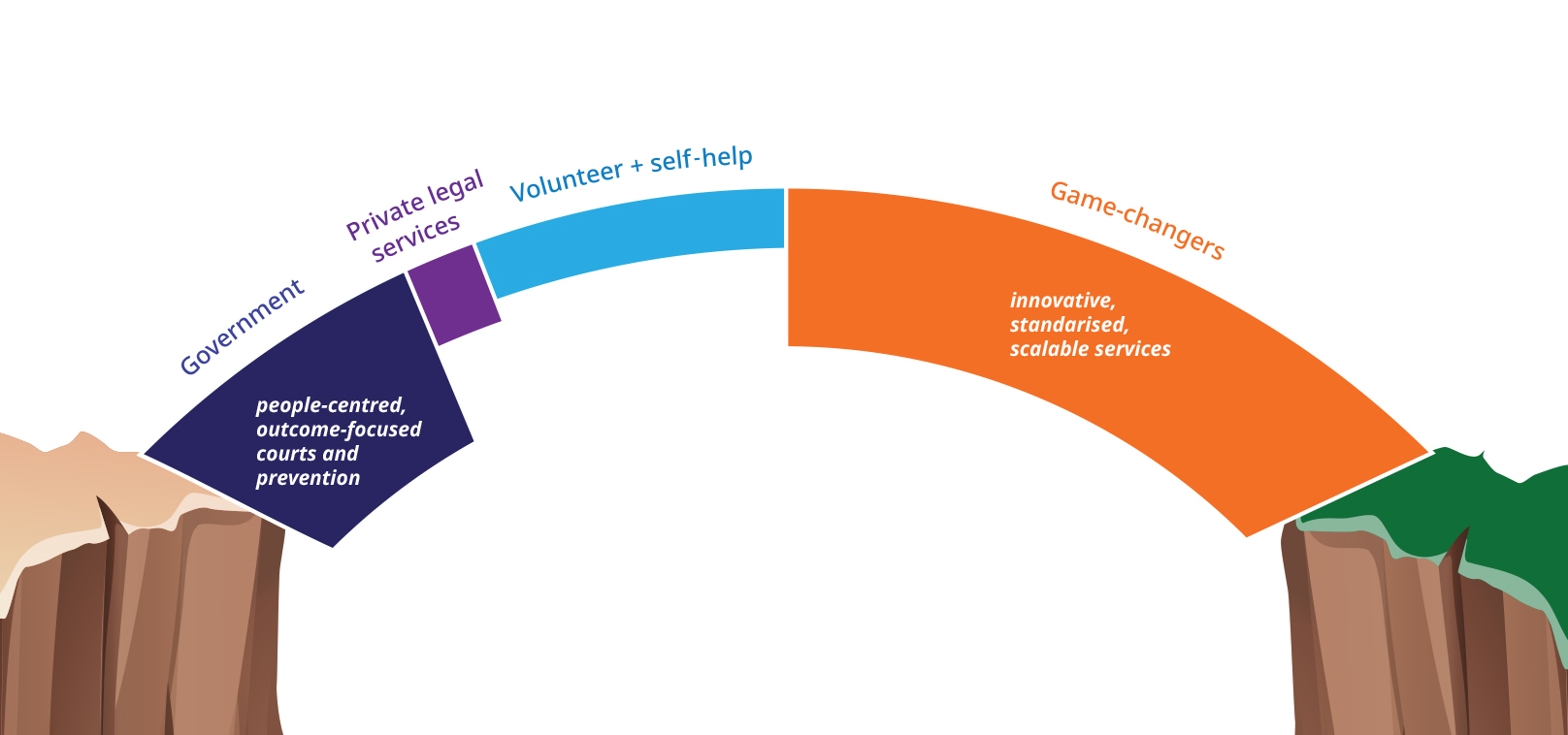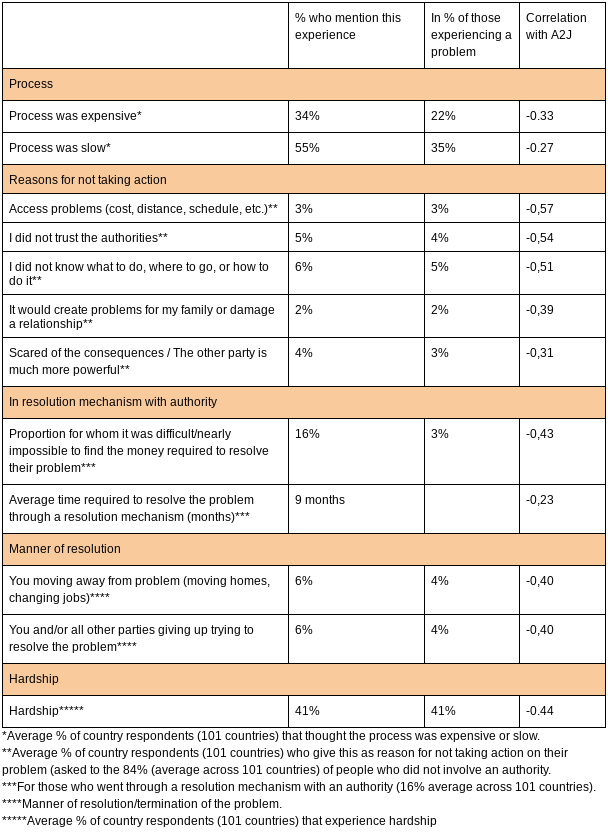
What Works to Improve A2J 3. Justice for all can be achieved by shifting focus.
This third blog post in the series draws on correlations evident in data to indicate how to transform justice processes.
Beyond lawyers and courts: the process of fair resolution
In the first two blogs in this series (here and here) we looked at positive contributions to access to justice. The World Justice Project (WJP) data suggest that governments and civil society should focus on assisting people to agree and comply, through fair processes that make resolution easy. Just sending more people to lawyers and courts is unlikely to help, or even has a negative effect. Courts can have a positive contribution where people experience more hardship from legal problems.
Power and access issues correlate negatively with A2J
Now I turn to survey answers that correlate negatively with A2J. The Table below summarises the data. Few people in most countries mention power issues or access barriers. But if more people mention such factors, this correlates rather strongly with low country A2J. Many people found the process slow or expensive, which also predicts low A2J. The more people experience hardship because of a problem, the lower the A2J score.
Just take a look at this Table for yourself

Access to justice barriers suggest how A2J processes should be improved
The access to justice barriers that people mention worldwide sound very familiar. Cost, distance, confusion, power, distrust, hardship and slow procedures. Interestingly, few people mention such barriers. These barriers are not that common. But, if more people mention these factors, A2J tends to be worse in their country. So these factors are still indicators of injustice. The data still suggest we need to make A2J processes cheaper, closer, easier, more equal and more trustworthy.
A2J is not equal to access to courts or access to (legal) advice
But again, sending more people to current procedures has little effect. This is true for:
- Having more people go to an authority to adjudicate, mediate or solve the problem (Pearson* correlation -0.04)
- Having more people turning to a court or tribunal (-.0.15).
- Having more people going to a lawyer or seeking professional help (-0.07).
- Having more people going to a government legal aid office (-0.06).
Focus on people, their problems and their outcomes, not on institutions
We need more focus on avoiding negative outcomes and more speed of resolution. Whilst making people agree, comply and open up courts for the hardest cases. This is what the Task Force on Justice and the OECD are recommending. Justice for all can be achieved by shifting focus. The OECD advises countries to redesign their access to justice processes. The Task Force urges countries to empower people, develop people centred justice services and focus on fair outcomes.
Justice sector needs to acquire new skills, new tech and new partnerships
This has huge implications. Deep innovation is needed. Far beyond current court procedures and legal advice, which are so similar everywhere. Money will have to be allocated to user centred design and a next generation procedures, focusing on making people agree. Which requires new skills, new technologies and new partnerships. If data are taken. seriously, the justice sector is in for a huge transformation.
So what ?
Time for reflection. First, let us be cautious. Correlation is not causation. Second, we are on to something. Let’s share these results and mobilise more analysis. Because data show the way.
* Peasons correlation measures the linear correlation between two variables. (Wiki page).


